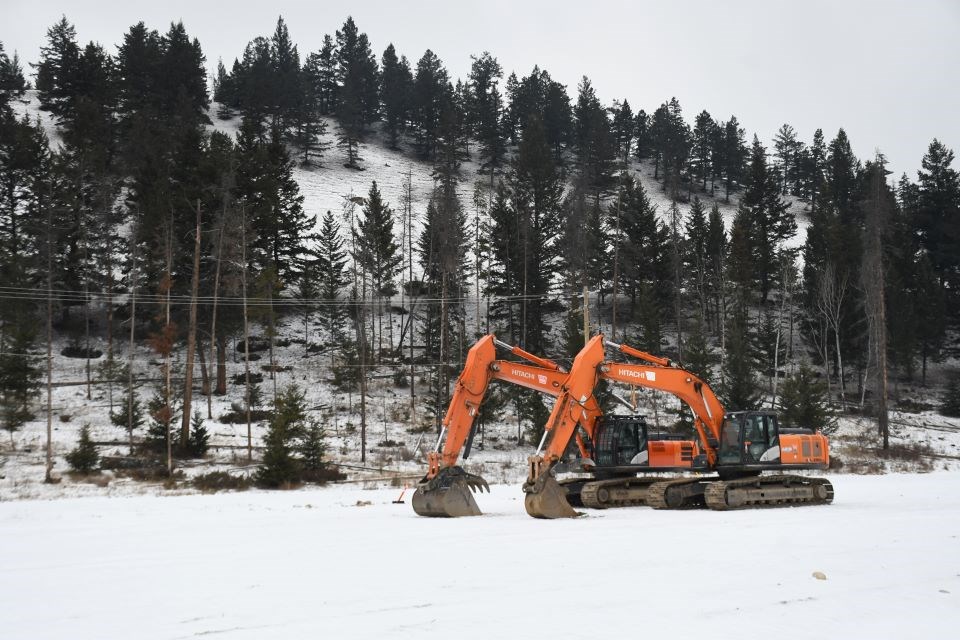Interim housing for Jasper residents displaced by the wildfire has hit a snag amid intergovernmental disputes about what form the housing should take.
The Alberta government has been insisting on permanent, single-detached units, but the Municipality of Jasper says high-density solutions are the way to go and has highlighted several issues with the province’s plan.
“Utilizing all 4.25 hectares of serviceable land at the density proposed by the Government of Alberta would yield only about 60 single detached units, far below the 250 units they initially announced, and not nearly enough to meet the surging housing needs in Jasper,” said Michael Fark, municipal director of recovery, during a virtual media briefing on Tuesday [Jan. 21].
Last summer, the Jasper wildfire destroyed roughly 30 per cent of the townsite, including 820 residential units, compounding the preexisting housing deficit of 600 units. More than 600 families have applied for interim housing.
“Interim housing is critical to the well-being of our residents, of our businesses, of our local visitor economy and to the very future of our small mountain community,” said Jasper Mayor Richard Ireland. “Housing is the foundation on which all recovery is built.”
The Alberta government previously promised to deliver 250 modular homes by early 2025, but negotiations between the province and Parks Canada around land leases have since come to a standstill.
Jason Nixon, minister of Seniors, Community and Social Services, said in a statement last week how they had encountered “numerous roadblocks and delays” from both the municipality and Parks Canada.
He specifically pointed out how they had significantly reduced the land available, were requiring high-density solutions and only provided enough land for eight permanent houses.
Janis Irwin, the Alberta NDP’s critic for housing, has accused the UCP government of revoking its $112-million commitment to Jasper.
“Instead of working with Jasper and the federal government, they’re playing politics,” Irwin stated on X. “Put the partisanship aside. Jasper deserves better.”
Fark noted other land parcels available within the townsite were either privately held, requiring significant time and cost to acquire, or not suitable for interim housing. Allocating this land for permanent, low-density housing would also critically limit the town’s ability to meet future housing needs.
As for why the town’s boundary cannot be expanded, Fark explained how most of the land surrounding the townsite was rocky, steep terrain or constrained by the railway, highway and river. Some of the land is also contaminated by dumpsites and diesel-contaminated soil.
Any expansion of the boundary would require an act of Parliament, and servicing the only potentially viable parcels outside the town would take a minimum of two years and cost an additional $20 million.
“This stresses the importance of maximizing the use of land available in town through scalable, higher-density interim housing solutions,” Fark said.
Parks Canada has been working on alternative housing solutions for its employees and the community.
These solutions include a work-camp-style accommodation of 120 single units at Marmot Meadows near Whistler Campground. The agency will also procure 50 duplex units – a total of 100 housing units – and has purchased four pre-built housing units that are ready for delivery to Jasper.
Fark acknowledged these high-density units would not be overly comfortable but emphasized there were no perfect or elegant solutions.
“The reality is that we have a large number of Jasper residents who need to be housed, and we have limited land available in order to meet those needs, so we need higher-density housing styles in order to be able to meet those pressing needs,” he said.
This housing is expected to come by the end of February. Fark said a prioritization matrix would be presented to council next week, and priority would go to the 70 families currently being housed in hotels.
Mayor Ireland emphasized they remained grateful for the Alberta government’s financial assistance, which has provided transitional housing and hotel rooms for many displaced residents as well as site servicing for interim housing.
He also warned that without interim housing, families would be unable to return, businesses would be deprived of the staff needed for the upcoming tourist season and Jasper’s local economy and reputation as an international visitor destination would suffer.
“Without adequate interim housing, our social and our economic recovery cannot properly begin, and our plight will deepen,” Ireland said. “The needs of our community are pressing. Together, we must all act swiftly and effectively to support those who call Jasper home.”
Minister Nixon told media in a virtual update on Tuesday (Jan. 21) that the government had considered multi-family homes, but those would take 18 months to two years to complete.
Nixon added they have conveyed their concerns to the federal government but have not received back any communication.
“We do not have provincial jurisdiction in the park, and we cannot complete projects of this magnitude, obviously, without the land to be able to build upon,” he said, noting they would continue to invest elsewhere in Jasper’s recovery.
In a statement, Parks Canada said it was committed to continue working with all levels of government to advance interim housing options.
“Parks Canada is open to making as much land available as possible to support the immediate interim housing needs for Jasper, recognizing the housing crisis that is facing us,” the statement read. “This includes using land inside and outside town boundaries.”
Parks Canada also echoed Fark’s comments that the Alberta government requirements for long-term leases for its units “does not align with Jasper’s needs,” since they require more space per unit than interim housing.
“Interim planning approaches are focused on accommodating as many units as possible, while long-term planning solutions include things like placement of the unit, ensuring road access, spacing and yard considerations to build a neighbourhood,” the statement added.




